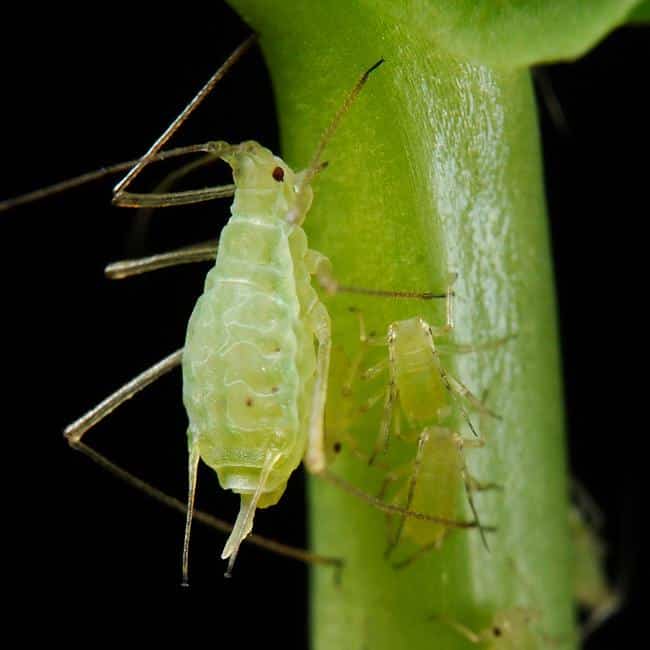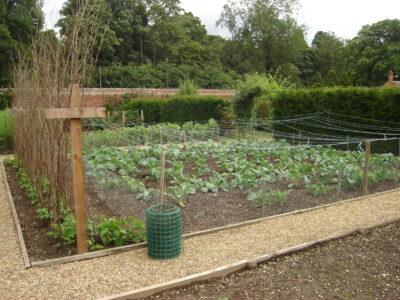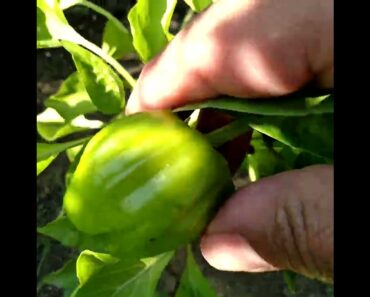As the season comes to a close for many gardeners in North America, you may be thinking of some much-deserved “time off” from your garden. After all, you’ve spent the last few months caring for plants and probably battling a few garden pests.
But before you pack in your gardening for this year, why not get a jump on battling next year’s pests? That’s right, there are a few things that you can do right now, in the fall, to help you avoid bugs in next year’s garden.
Let’s look at the end-of-season tasks that can help make next year’s gardening season a whole lot smoother.
1. Give your garden a final weeding.
If you’re like many gardeners, wedding is probably your least favorite task, but removing weeds one last time is going to give you a leg up on battling pests come spring. That’s because a weedy garden can allow many of this year’s pests to survive the winter, giving them a ready supply of food and shelter.
Pulling weeds now has the added advantage of making your spring gardening tasks a lot less daunting, too. After all, come spring you’ll be excited about planting, and the less time that you have to spend weeding, the better.
Why not pull them now instead and start the new season to help avoid bugs?
Ride your home of pesky fall insects naturally
2. Get rid of dead plants and debris.
Just as pests enjoy hiding out in weeds, they also can thrive in dead and diseased plant material and other garden debris. The last thing you want to do is leave a bug buffet out for your garden foes all winter!
Clean up your garden before winter, being sure to remove any annual plants or any crops that are diseased or dead.
Be sure that these diseased plants don’t find their way into your compost, either, unless you are absolutely sure that your compost will heat up (between 120 and 140 degrees Fahrenheit is the ideal). Otherwise, you could end up inadvertently re-introducing pests to your garden after you’ve worked so hard to remove them.
If you’re at all unsure whether your compost pile will heat up enough to kill these pests, then throw out diseased plant material.
3. Till your soil.
Removing weeds and old plants alone does not ensure you’ve gotten rid of the bugs. In fact, some of the worst offenders like to burrow in the ground and remain there over winter only to emerge when the weather warms again – ready to destroy a freshly planted garden. Don’t give them that chance.
To deal with these nasty critters, get out your rototiller one more time this season and give your garden a good, deep tilling. This will help to push those pests deeper underground. Other pests will be pulled up to the surface, where it will become too cold for them to survive.
Tilling your garden once more at the end of the season also has the added benefit of introducing more organic matter into the soil.
4. Amend your garden if necessary.
The healthier your soil is, the healthier your plants will be. And the healthier your plants are, the less vulnerable they will be to pesky garden insects. If it’s been a while since you’ve done a soil test, take the end of the season as an opportunity to do so.
Seamazing: The Low-Cost Way To Re-mineralize Your Soil
Adjust your soil’s pH with any amendments as necessary. Planting a cover crop in the fall and then turning it under in the spring is a great way to add more nitrogen to the soil.
5. Start planning your spring garden.
Planning next year’s garden is about more than deciding what variety of tomato you’d like to try next year. It’s also about reviewing any pest problems that you had the previous season and strategizing how to avoid bugs in the coming season.
Part of your strategy should be crop rotation. If a particular crop encountered pest problems one year, it should be moved to a different location in the next year.
Another part of the strategy involves how you choose your varieties of vegetables. Depending on what problems you experienced, research some varieties of plants that are resistant to those problems. Or research what types of companion plants can help to minimize the problem.
So before you hang up your gardening gloves this season, take the time to prepare for spring and give yourself the advantage over pests next year.
What advice would you add? Share it in the section below:




























